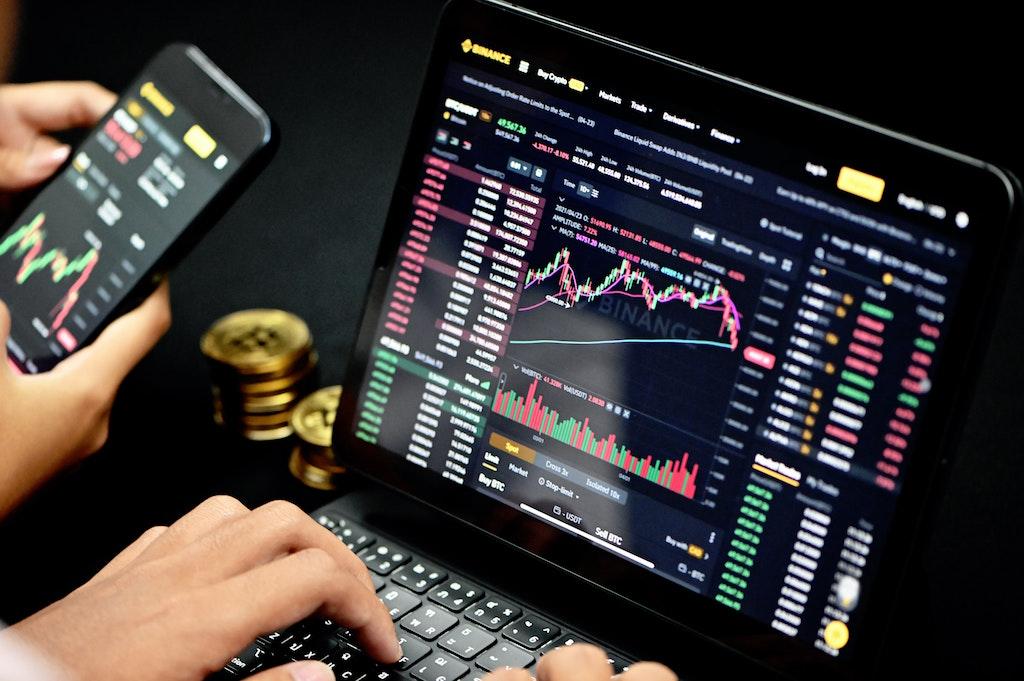In the bustling labyrinth of the finance world, there’s an elusive beast that’s been growing in popularity. Its name? Margin trading. An enchanting, complex mechanism that has woven its web into the intricate fabric of financial trading.
A daring dance with borrowed wealth, margin trading is the art of employing funds procured from your trusty broker. These funds, otherwise known as ‘margin’ or ‘leverage,’ act as your magical weapon, your golden ticket to magnify gains and take a shot at a pot of gold that may be otherwise out of reach.
So, how does this magic spell work, you may ask?
Imagine an investor, hungry for an opportunity, stepping into this dangerous dance. They extend their hand to their broker, who, in return, offers a line of credit. This handshake’s strength depends on the collateral the investor brings to the table. The more impressive their collateral, the grander the credit extended to them.
With these borrowed funds nestled securely in their pocket, our investor can now embark on a daring quest, acquiring a greater number of assets than they could have with their own wealth. If fortune smiles upon them and their investments turn into a treasure, they can reimburse the borrowed amount, pocketing the excess profit. However, if misfortune decides to pay a visit, they might find themselves in the perilous situation of a margin call, facing a debt larger than their initial investment.
Margin trading has two faces – long and short.
The ‘long’ face sees the investor courageously borrowing funds to buy an asset, confident that its value will skyrocket. The ‘short’ face, on the other hand, anticipates a decrease in the asset’s value. In this scenario, our investor borrows funds to sell the asset, intending to repurchase it when the price falls, paying back the borrowed sum, and keeping the difference.
The often-tumultuous sea of the stock market is a preferred playground for margin traders. With a margin account in hand, they can venture forth, leveraging borrowed capital to purchase a plethora of stocks. But tread carefully, for this sea can be fickle. If the tide turns against them, the losses can be as significant as the potential profits.
Margin trading, like a double-edged sword, has its allure and its risks.
The allure lies in the ability to leverage borrowed funds, amplifying gains and unlocking doors to previously inaccessible assets. The risks, however, are equally potent. A misstep, a market moving against the investor, and they could be staring down losses far exceeding their initial investment. And if they fail to repay their borrowed wealth, they might see their assets liquidated by the broker.
To navigate this labyrinth successfully, an investor must arm themselves with a deep understanding of the market and a well-planned trading strategy. They need to define clear entry and exit points for trades, invest only what they can afford to lose, and have stop-loss orders in place to put a leash on potential losses.
But wait, there’s more to consider!
Before diving headfirst into margin trading, an investor must reflect on their risk tolerance, their investment goals, and their financial situation. It’s crucial to familiarize oneself with the terms and conditions of the margin account, such as the interest rates and margin requirements.
Let’s talk about margin calls and liquidation.
If the investor’s assets plummet below a set level, they might hear the ominous ring of a margin call. This ring is a warning to either deposit more funds or sell assets to reimburse the borrowed sum. If the investor fails to respond to this call, they might see their assets being liquidated.
And what about taxes?
Yes, margin trading has tax implications. Profits are subject to capital gains tax, while the interest paid on margin loans could potentially be tax-deductible. It’s wise to have a chat with a tax professional before embarking on the margin trading journey.
Margin trading, while often mistaken for day trading, is a separate entity.
Day trading is akin to a lightning-fast chess game, with assets bought and sold within the same day. Margin trading, on the other hand, is a slower, calculated dance with borrowed funds over a more extended period, often deemed riskier than day trading.
Margin trading has also extended its reach into the rollercoaster world of cryptocurrencies.
Investors can now borrow funds to trade cryptocurrencies with leverage, potentially increasing profits. But beware, the high volatility of the crypto market makes this dance particularly perilous.
In conclusion, while margin trading offers an enticing path to amplified profits, it also wields considerable risks. Investors must step into this dance armed with a thorough understanding of their financial situation and well-defined investment goals. Be prepared for the potential of margin calls and liquidation, for the dance of margin trading can be as treacherous as it is exciting.
FAQs
Is margin trading a suitable dance for everyone?
No, this complex dance is not recommended for beginners or those with a low tolerance for risk.
How much can I borrow in this dance?
The amount you can borrow depends on your collateral and the broker’s margin requirements.
What happens when a margin call rings?
You need to either deposit more funds or sell assets to repay the borrowed sum. Failure to do so could lead to your assets being liquidated.
Can I dance with any asset class in margin trading?
Yes, you can dance with a variety of asset classes, including stocks, cryptocurrencies, and forex.
Does the dance of margin trading have tax implications?
Yes, profits from margin trading are subject to capital gains tax, while the interest paid on margin loans could potentially be tax-deductible. It’s advised to consult with a tax professional for more detailed information.

